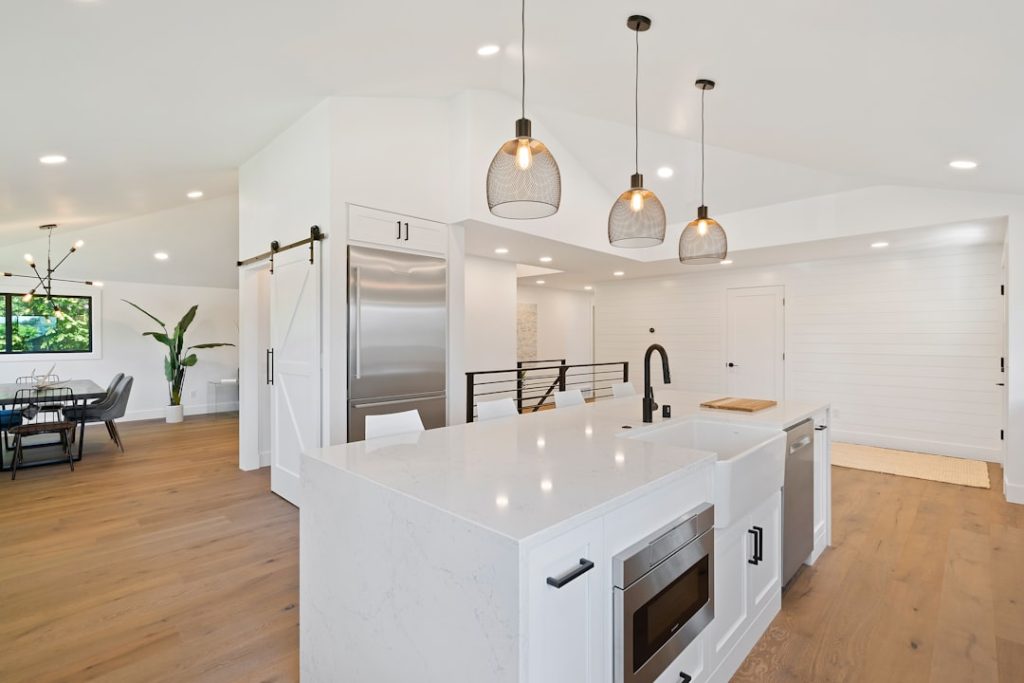Before embarking on any renovation project, it is crucial to have a clear understanding of its scope. This involves defining the specific goals you wish to achieve, whether it’s updating a kitchen, adding a bathroom, or completely overhauling your living space. A well-defined scope not only helps in visualizing the end result but also serves as a roadmap for the entire project.
It is essential to consider the current state of your home, the desired changes, and how these changes will impact your daily life. For instance, if you are planning to remodel your kitchen, think about how the layout will affect your cooking and entertaining habits. Will you need more counter space?
Is an open-concept design more suitable for your lifestyle? Additionally, understanding the scope means assessing the structural limitations of your home. Some renovations may require significant alterations to load-bearing walls or may involve plumbing and electrical work that complicates the project.
Engaging with professionals early in the planning phase can provide insights into what is feasible and what might require additional resources or time. This initial assessment can save you from costly mistakes down the line and ensure that your vision aligns with reality. By clearly outlining your renovation goals and understanding the limitations of your space, you can create a more effective plan that guides your decisions throughout the renovation process.
Key Takeaways
- Clearly define the full scope of your renovation to avoid unexpected expenses.
- Plan and allocate your budget carefully for materials, labor, permits, and inspections.
- Account for hidden costs and set aside a contingency fund for unforeseen issues.
- Consider upgrading utilities and energy-efficient features to save long-term costs.
- Explore financing options and payment plans to manage cash flow during the project.
Budgeting for Materials and Supplies
Once you have a clear understanding of your renovation project’s scope, the next step is to establish a budget for materials and supplies. This aspect of budgeting is often more complex than it appears at first glance. It requires not only estimating costs but also considering the quality and longevity of materials.
For example, if you are renovating a bathroom, you might choose between standard ceramic tiles and high-end natural stone. While the latter may have a higher upfront cost, it could offer greater durability and aesthetic appeal in the long run. Therefore, it is essential to balance initial costs with potential long-term benefits when selecting materials.
Moreover, it is wise to research various suppliers and compare prices before making any purchases. Many homeowners find that shopping around can lead to significant savings, especially when buying in bulk or during sales events. Additionally, consider the possibility of sourcing materials from reclaimed or second-hand stores, which can provide unique options at a fraction of the cost.
However, while budgeting for materials, it is also important to account for potential price fluctuations due to market conditions or supply chain issues. By building a flexible budget that allows for adjustments, you can better navigate unexpected changes without derailing your entire project.
Hiring Contractors and Labor Costs

Hiring the right contractors is a pivotal step in any renovation project, as their expertise can significantly influence both the quality of work and the overall timeline. When selecting contractors, it is essential to conduct thorough research, including checking references and reviewing past projects. A reputable contractor will not only have a portfolio of completed work but will also be transparent about their processes and pricing structures.
It is advisable to obtain multiple quotes to compare labor costs and services offered. This practice not only helps in finding competitive pricing but also provides insight into how different contractors approach similar projects. Labor costs can vary widely based on location, project complexity, and contractor experience.
For instance, urban areas may have higher labor rates due to increased demand and living costs. Additionally, specialized trades such as electricians or plumbers may charge more than general contractors due to their specific skill sets. It is also important to consider whether you want to hire a general contractor who will manage all aspects of the renovation or if you prefer to hire individual tradespeople for specific tasks.
Each approach has its pros and cons; while hiring a general contractor can simplify communication and coordination, working with individual trades may offer more control over specific elements of the project.
Permits and Inspection Fees
| Permit Type | Fee Amount | Inspection Type | Inspection Fee | Typical Processing Time |
|---|---|---|---|---|
| Building Permit | 150 | Initial Inspection | 75 | 5-7 Business Days |
| Electrical Permit | 100 | Rough-In Inspection | 60 | 3-5 Business Days |
| Plumbing Permit | 120 | Final Inspection | 80 | 4-6 Business Days |
| Mechanical Permit | 110 | Follow-Up Inspection | 50 | 3-4 Business Days |
| Demolition Permit | 130 | Site Inspection | 70 | 5-7 Business Days |
Navigating the world of permits and inspection fees is an often-overlooked aspect of home renovations that can lead to unexpected delays and costs if not properly addressed. Depending on the scope of your project, local regulations may require various permits before any work can commence. For example, structural changes such as adding a room or altering plumbing systems typically necessitate permits to ensure compliance with building codes and safety standards.
Failing to secure these permits can result in fines or even having to undo completed work. The cost of permits varies significantly based on location and project type; some municipalities charge flat fees while others base costs on project valuation. It is advisable to consult with local building authorities early in the planning process to understand what permits are required for your specific renovation.
Additionally, scheduling inspections at various stages of the project may also incur fees but is essential for ensuring that all work meets safety standards. By proactively addressing permit requirements and associated costs, you can avoid potential roadblocks that could derail your renovation timeline.
Hidden Costs and Contingency Budgeting
In any renovation project, hidden costs are an inevitable reality that can catch even the most diligent planners off guard. These costs can arise from various sources, including unforeseen structural issues discovered during demolition or changes in material prices mid-project. For instance, once walls are opened up during a kitchen remodel, you might discover outdated wiring or plumbing that needs immediate attention, leading to additional expenses that were not initially accounted for in your budget.
To mitigate the impact of these hidden costs, it is prudent to establish a contingency budget—typically around 10-20% of your total renovation budget. This reserve fund acts as a financial buffer against unexpected expenses that may arise during the course of your project. By planning for contingencies from the outset, you can maintain greater control over your finances and reduce stress as surprises occur.
Additionally, maintaining open communication with your contractors about potential issues can help identify problems early on, allowing for timely adjustments to both timelines and budgets.
Upgrading Utilities and Energy-Efficient Features

As part of a comprehensive renovation plan, upgrading utilities and incorporating energy-efficient features can yield significant long-term benefits for homeowners. Modernizing systems such as heating, ventilation, air conditioning (HVAC), plumbing, and electrical wiring not only enhances comfort but also improves energy efficiency—leading to lower utility bills over time. For example, replacing an outdated HVAC system with a high-efficiency model can reduce energy consumption by up to 30%, depending on usage patterns.
Incorporating energy-efficient features into your renovation can also increase your home’s value and appeal to environmentally conscious buyers in the future. Options such as Energy Star-rated appliances, LED lighting, and high-performance windows contribute to sustainability while enhancing aesthetic appeal. Additionally, many local governments offer incentives or rebates for homeowners who invest in energy-efficient upgrades, further offsetting initial costs.
By prioritizing these improvements during your renovation, you not only create a more comfortable living environment but also contribute positively to environmental sustainability.
Design and Architectural Fees
Engaging with design professionals or architects can elevate your renovation project by ensuring that it meets both functional needs and aesthetic desires. While hiring these experts incurs additional costs—often calculated as a percentage of the total project budget or as an hourly rate—their expertise can lead to innovative solutions that maximize space utilization and enhance overall design quality. For instance, an architect might suggest structural modifications that allow for an open-concept layout while maintaining necessary support for load-bearing walls.
Moreover, design professionals can assist in navigating zoning laws and building codes that may impact your renovation plans. Their knowledge of local regulations ensures that your project complies with all necessary guidelines while also helping you avoid costly mistakes that could arise from misinterpretation of rules. When budgeting for design fees, consider not only their initial costs but also the potential value they add through improved functionality and aesthetics in your home.
Financing Options and Payment Plans
Financing a renovation project requires careful consideration of available options to ensure that you choose a plan that aligns with your financial situation and goals. Traditional methods include home equity loans or lines of credit (HELOCs), which allow homeowners to borrow against their property’s equity at relatively low-interest rates. These options are particularly appealing for larger renovations where substantial funds are needed upfront.
Alternatively, personal loans or credit cards may be suitable for smaller projects or when immediate cash flow is necessary; however, they often come with higher interest rates compared to secured loans like HELOCs. Some homeowners may also explore government-backed loans specifically designed for home improvements or energy-efficient upgrades, which often feature favorable terms and conditions. Additionally, many contractors offer payment plans that allow homeowners to spread out costs over time rather than paying everything upfront.
When considering financing options, it is essential to evaluate not only interest rates but also repayment terms and any associated fees. A thorough understanding of these factors will help you make informed decisions that align with your financial capabilities while ensuring that your renovation project proceeds smoothly without unnecessary financial strain.




